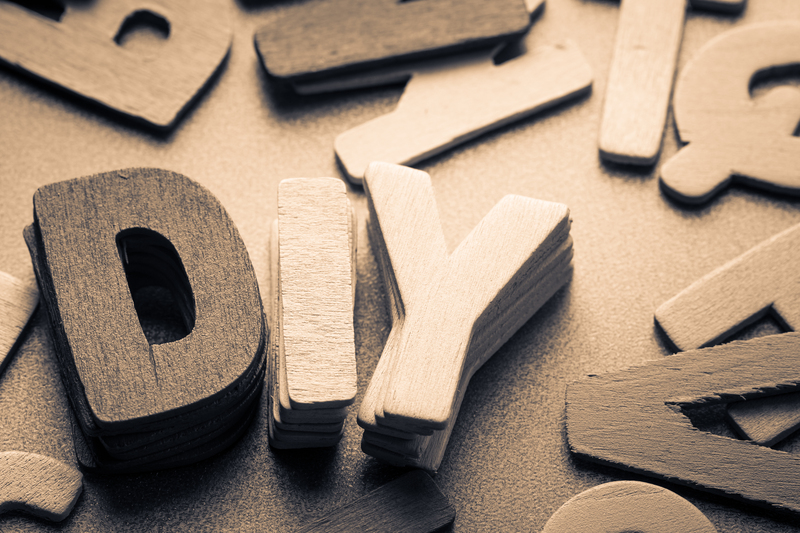Do's and Don'ts of Disposing of Your PPE Waste Responsibly
Personal Protective Equipment (PPE) has become an essential part of our everyday lives, particularly since the outbreak of COVID-19 and the growing awareness of workplace safety. Items such as masks, gloves, face shields, and gowns help protect us from infectious diseases, hazardous substances, and environmental contaminants. However, the increased use of PPE also brings about a pressing concern: how to dispose of PPE waste in an environmentally responsible manner.
Improperly discarded PPE can pose severe risks to public health and the environment. Single-use plastics from gloves and masks, for example, can end up polluting our oceans or endangering wildlife. That is why it's critical to follow best practices for PPE waste management, ensuring our safety while safeguarding the planet.
Why Responsible Disposal of PPE Waste Matters
Understanding why disposal of PPE waste responsibly is necessary will motivate individuals and organizations to adopt proper practices. Here's why it matters:
- Environmental Protection: Disposable PPEs are largely made from plastic-based materials that do not biodegrade. If they're not disposed of properly, they accumulate in landfills, rivers, and oceans, contributing to pollution.
- Public Health: Used PPE may carry infectious agents. Careless disposal increases risks of disease transmission to sanitation workers and the general public.
- Wildlife Safety: Animals often mistake PPE for food or get entangled, which can be fatal.
- Legal Compliance: Many regions have regulations on medical and hazardous waste disposal. Violations can result in penalties.

Best Practices (Do's) for Disposing of Your PPE Waste Responsibly
1. Segregate PPE Waste from Regular Trash
Never mix used PPE items with general household or office waste. Create a designated bin specifically for used masks, gloves, and other protective gear. This separates potentially hazardous materials from recyclables and non-contaminated waste.
2. Use the Right Disposal Bins
Place clearly labeled bins in accessible areas at your facility or home. Color-coded bins--often yellow for infectious waste--can prevent accidental mixing.
- Healthcare facilities: Must use certified biohazard containers.
- Home settings: Designate a sturdy, closable bin for PPE waste.
3. Bag PPE Waste Securely
Always place used PPE into a sealed plastic bag before discarding it in the bin. This minimizes the risk of exposure to viruses and bacteria, safeguarding both waste handlers and the community.
- Use strong, puncture-resistant bags for best results.
- Double-bag if there's a risk of the inner bag tearing or leaking.
4. Follow Local Guidelines for Disposal
Every country, and often every city, may have their own regulations for PPE waste disposal. Always follow municipal and environmental authority guidelines to ensure compliance.
- Some regions require PPE to be taken to specific disposal facilities.
- Check if there are PPE collection drop-off points in your locality.
5. Educate & Train Staff or Family Members
Whether at home, work, or in public spaces, everyone should understand the importance of safe PPE waste disposal.
- Organize training for employees in workplaces handling large amounts of PPE.
- Place clear instructions and signs near disposal points.
6. Consider Single-Use vs. Reusable PPE
Whenever appropriate, opt for reusable PPE that can be sanitized rather than constantly discarding single-use items. This can substantially reduce your environmental footprint.
- Ensure proper washing and sanitization of reusable PPE.
- Follow the manufacturer's guidelines for care and lifespan.
7. Report and Clean Up Improperly Disposed PPE
If you come across littered PPE in public places, report it to the appropriate municipal department or clean it up safely if possible (while wearing gloves and using a waste bag). Being proactive helps keep communities safe.
What Not to Do (Don'ts) When Disposing of PPE Waste
1. Don't Throw PPE in the Recycling Bin
Used gloves, masks, and gowns are not recyclable and should never be placed in recycling bins. They can contaminate recyclables and endanger sorting staff.
- PPE and recycling are strictly incompatible.
- Recyclables exposed to used PPE are often discarded as contaminated.
2. Don't Flush PPE Down Toilet or Sink
Flushing masks, gloves, or wipes leads to blockages and pollution in the sewage system and potentially in rivers, lakes, or oceans.
- Always bag PPE and use proper waste bins.
3. Don't Litter Public Places
Disposing of masks or gloves in parks, streets, or public bins increases pollution and public health risks. Take PPE waste home if suitable disposal bins are unavailable.
4. Don't Reuse Single-Use PPE
Attempting to wash or reuse single-use masks and gloves is dangerous. They lose their protective qualities and may harbor pathogens.
- Dispose of single-use items after one use.
5. Don't Burn PPE Waste Yourself
Burning PPE releases toxic fumes (like dioxins and furans) harmful to both human health and the environment. Only certified waste handling facilities should incinerate medical waste using controlled processes.
6. Don't Touch PPE Waste Without Protection
Always wear gloves and, if possible, a mask when handling PPE waste, especially if it does not belong to you. Wash your hands thoroughly afterward.
Innovative Solutions for PPE Waste Management
As the use of protective equipment has surged, so too have innovations for managing PPE waste responsibly. Here are some emerging solutions:
- PPE Recycling Programs: Some companies now offer specialty recycling for certain types of PPE--for example, TerraCycle's zero-waste boxes for masks and gloves.
- Biodegradable PPE: New materials are being developed for biodegradable masks and gloves to reduce environmental impact.
- PPE Collection Stations: Hospitals, airports, and public venues provide dedicated PPE collection bins for safe disposal and treatment.
- Energy Recovery: Some facilities use special incinerators to convert PPE waste to energy, reducing landfill.
How to Protect Waste Workers and the Community
Responsible PPE waste disposal is a shared duty. Here's how you can help:
- Seal Bags Properly: Always tie bags securely before placing them in the outside bin to reduce leakage and contact risk.
- Label Waste If Necessary: In workplaces, label bags containing PPE as "infectious waste" for safe handling.
- Timing: Wherever possible, put out PPE waste just before collection, not days in advance.
- Hygiene: Always wash your hands after disposing of PPE waste, and disinfect bin handles regularly.
Understanding Regulations and Legal Responsibilities
Compliance with local PPE disposal regulations is crucial for individuals and organizations. Legal guidelines may include:
- Segregation requirements: Businesses must often keep PPE waste separate and log its disposal.
- Licensing: Only certified waste companies should transport large quantities of PPE waste.
- Record-Keeping: Medical or industrial sites may need to keep records of PPE waste amounts and disposal methods.
Always consult your local authority or environmental health department for the most current regulations on responsible PPE waste management.
Environmental Impact of Improper PPE Disposal
When PPE is not disposed of responsibly, the consequences can be far-reaching:
- Wildlife threat: Animals can become entangled in masks or ingest gloves, leading to injury or death.
- Plastic pollution: PPE contributes to the growing plastic crisis, with microplastics entering food chains.
- Pathogen spread: Inadequately disposed PPE can harbor and spread harmful pathogens in the community.
- Blockage of waste systems: PPE in toilets or plumbing systems can cause severe blockages and maintenance issues.
Raising Awareness & Community Involvement
Community involvement and education are key to improving PPE waste disposal habits.
- Launch local campaigns encouraging proper disposal.
- Install accessible PPE bins in parks, public areas, and workplaces.
- Share information on social media using infographics and easy-to-follow guides.
- Help neighbors--particularly the elderly or those with mobility issues--dispose of their PPE safely.

Frequently Asked Questions about PPE Waste Disposal
1. Can I recycle my reusable masks?
Reusable masks can be washed and worn again until they reach the end of their lifespan. Once worn-out, check if your local recycling facility accepts textile waste. Otherwise, dispose of them in the regular waste bin.
2. Is there any PPE I can compost?
Standard PPE is made from synthetic plastics and is not compostable. However, innovations are emerging in the form of biodegradable masks and gloves--read the packaging carefully before composting.
3. What do I do with non-contaminated PPE?
If you believe your PPE was not exposed to hazards, it still should be disposed of in a sealed bag. The risk of hidden contaminants means that even "clean" items can pose threats. Always err on the side of caution.
4. How can I reduce the volume of PPE waste my household generates?
- Choose reusable masks and face shields where possible.
- Use PPE only when necessary, following official advice.
- Encourage proper care and maintenance of existing PPE.
5. What should I do if local PPE disposal bins are full?
Never leave PPE on top of or beside full bins. Take your waste home and ensure it is stored securely until the next pickup or until you find an available bin.
Conclusion: Taking Collective Responsibility for PPE Waste
Disposing of PPE waste responsibly is a small but vital act in protecting public health and the environment. By following the do's and don'ts outlined above, you can significantly reduce risks to others, wildlife, and our planet. Whether you're an individual, parent, employer, or community leader, your actions matter.
Let's cultivate sustainable habits and spread awareness on the importance of responsible PPE waste management. Together, we can maintain safe, clean, and healthy communities--now and for future generations.
